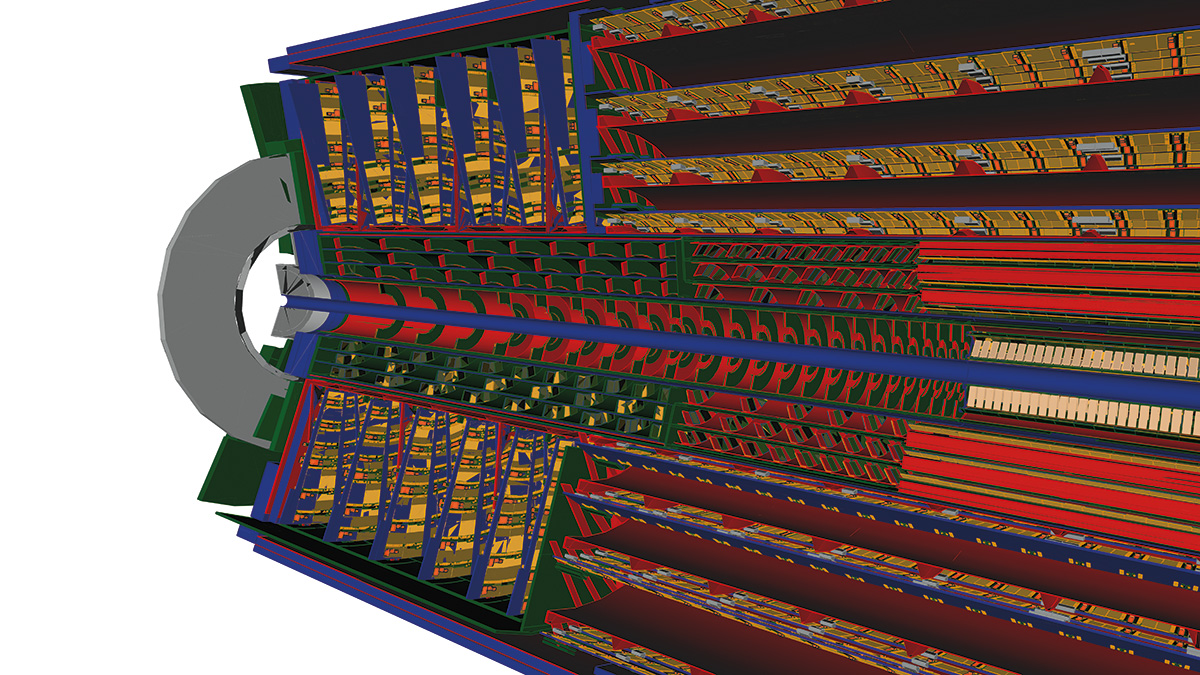Exploring the “coolest” mock-up
10 September 2020 | By

It was in 2014, just a few months after my transition from ALICE to ATLAS, that I saw the mock-up for the first time: a full-scale wooden reproduction of the central portion of the ATLAS experiment, measuring some 8 metres high and wide.
I was with my office mate Jan Godlewski that day, who would retire some months later. Like me, he was a mechanical engineer, as well as being the Cooling Coordinator of ATLAS. With his usual smile he started to tell me that, in 2001, he was in charge of the construction of such handicraft objects, along with 3 other collaborators. The goal at the time was to verify detector geometries, checking for available gaps where hundreds of power and read-out cables could be installed. These mock-ups were also employed to test the pipes used in the evaporative cooling system of the central detectors, in preparation for the actual installation in the experimental cavern which happened in 2007.
There I was, in the middle of yet another fascinating story that Jan was describing like an adventure – one of the many you might hear at CERN if you talk with physicists and engineers. Enthralled by the accuracy of some details, I would never have imagined that a couple of years later the mock-up would become my second office at CERN. 15 years after its first installation, we pulled it out of the drawer because a new mission awaited it.
But why, after all this time, was a wooden mock-up once again essential? Are the 3D models that faithfully reproduce the available spaces not enough? Partially yes, but not completely.
These new detectors will have crazy performance – their electronics will have to be kept at -40°C in order for them to survive the high radiation environment.

In 2016, the mock-up became operational once again. Installed in one of the CERN workshops, it is surrounded by truss structures – as if on the stage of a rock concert – and equipped with pipes connected to a new cooling system. It is helping us test CO2 evaporative cooling technology, which at CERN will make up the main cooling systems of future ATLAS and CMS trackers. These new detectors will have crazy performance, and their electronics will have to be kept at -40°C in order for them to survive the high radiation environment.
In order to build such increasingly powerful detectors, operating in extreme working conditions, we have to develop new solutions. Thus the ATLAS Collaboration, together with contributions from CMS, launched an R&D project called Baby-DEMO. The project, which I am in charge of, is carried out by a team of engineers and technicians working to provide the ATLAS with the most suitable and greener cooling technology. Transitioning to CO2 evaporative cooling will allow us to reduce the usage of Freon and other greenhouse refrigeration gases in our experiments.
The mock-up is the ideal tool for performing an in-depth study of the cooling system, because we can check our limits and try to overcome them. It is also being used to verify various other functionalities of new detectors, and is available to teams developing detector prototypes or working on the integration of the new cables. Proving that, just as it was twenty years ago, reality is still the best 3D model available.
Now I, just like Jan, have a story to tell!
Other Languages: Italian




